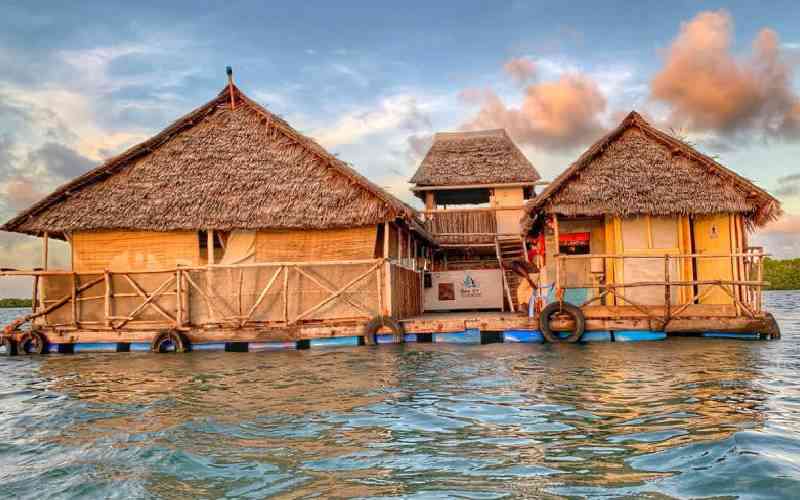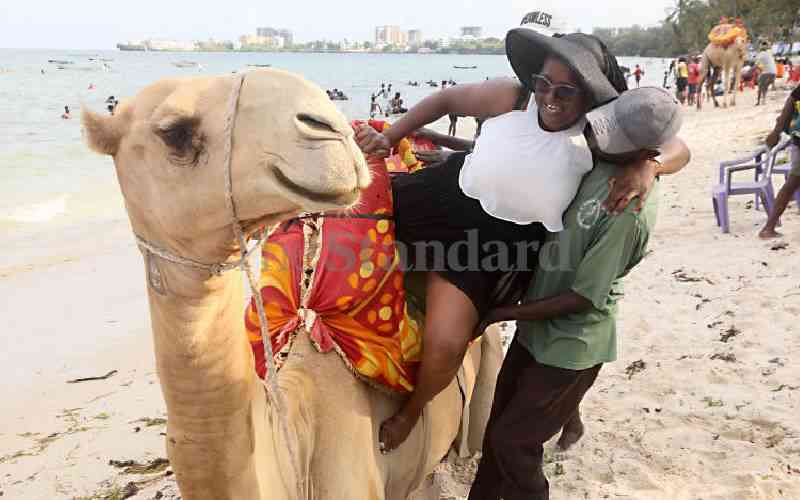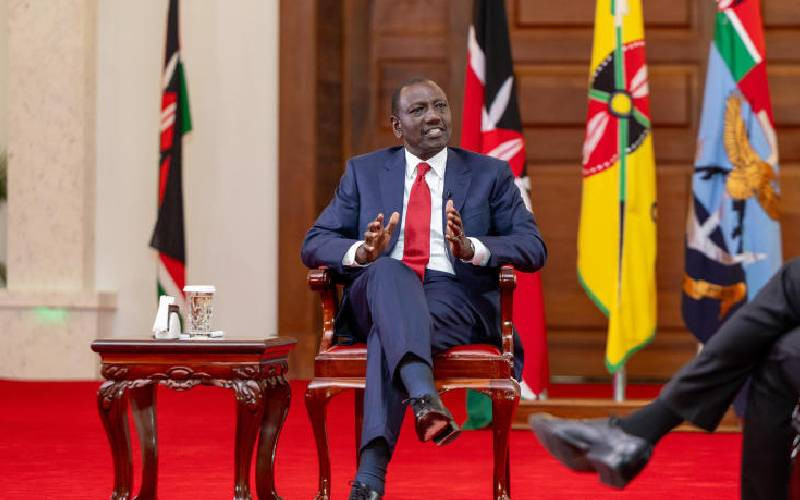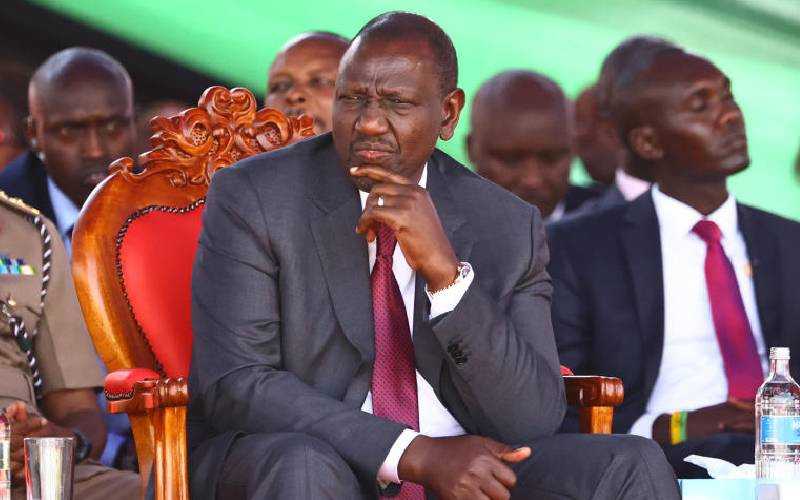By Philip Mwakio
Hoteliers are looking to tap onto the domestic and regional market as the number of tourists visiting Kenya’s coast fell by 22 per cent in the first eight months of this year compared to last year.
Islamists-led violence and the cost of landing rights in the traditional tourist hot spot caused the decline.
Alongside tea and horticulture, tourism is one of Kenya’s major foreign currency earners and raked in Sh98 billion ($1.18 billion) last year, just shy of its Sh100 billion target, and up from Sh74 billion in 2010.
But officials said on Friday that the number of tourists arriving in Mombasa, the gateway to the Indian Ocean coast, had dropped to 121,472 between January and August, compared to 156,521 in the same period last year.
They attributed the fall to the cancellation of major charter flights to Mombasa.
Big loss
“We have witnessed the cancellation of at least five major charters that were flying directly from our key market sources to Mombasa,” Sam Ikwaye, chairman of Kenya Association of Hotel Keepers and Caterers, told Reuters.
He said British-operated Monarch Airlines, Air Berlin, France’s Corsair and Tui UK were among airlines that cancelled.
SN Brussels from Belgium and 1 Time airline from South Africa had also pulled out.
“Most of these charters were flying in daily, some twice weekly, and were packed with tourists, so you can see what these cancellations have done to us,” said Ikwaye.
Travel advisories
Britain, the United States and Australia issued Kenya-related travel advisories to their citizens after a British tourist was killed near the coastal resort of Lamu last year.
Kenya Defence Forces later entered Somalia to try to root out the al Qaeda-linked militant group blamed for attacks in the area, triggering apparent revenge grenade and gun attacks in Nairobi, and Mombasa.
Concerns about a repeat of the violence that erupted after a disputed presidential election in 2007 also linger and deadly riots in Mombasa and inter-tribal fighting further north on the Coast have unnerved tourists. Ikwaye said what he called the high cost of landing in Mombasa had also kept tourists away, while fears of Somalia pirates meant few cruise ships had docked at the coastal resort this year.
Stay informed. Subscribe to our newsletter
A number of hotels, however, are diversifying to the local and regional market to grow revenues. In September, overall bed occupancies in hotels in the South Coast averaged a paltry 43 per cent.
“We are forced to aggressively look into the local and regional market instead of always depending on traditional markets to help us stay afloat,’’ George Swanya, the General Manager of Hillpark Hotel, Tiwi Beach, said.
Swanya who was addressing the hotel’s corporate clients during a cocktail at its Ole Monana Building, Moi Avenue, Mombasa said that they have repositioned themselves to tap into conference tourism and exclusive wedding packages.
“Apart from our Tiwi hotel conference facilities, we are coming up with day conferencing at our Ole Monana building right in the middle of Mombasa city,’’ he said.
He added that the venue would be ideal for both conferences, product launches and seminars and can accommodate upto 100 persons.
Better facilities
“Over dependence on overseas tourists has time and again affected us badly whenever there are issues to do with travel advisories and the general economic crunch affecting our key source market that is Europe,’’ Swanya said.
Separate analysis of the general situation in the South coast premiered as one of Kenya’s best tourism havens indicate that some hotels even operated at 15 per cent occupancies last month. But another hotelier, Gomeri Kombo of the Indian Ocean Beach Resort and Spa, said that there was urgent need for industry stakeholders to stop lamenting and look elsewhere for business.
“We have a larger East African Community (EAC) market and with good air connectivity by regional flyers like Rwandair, Air Uganda, Precision Air and national carrier, Kenya Airways, coastal Kenya should not suffer,’’ Kombo said.
He, however, blamed on the continued poor services at the Likoni Ferry crossing channel, which serves as the only direct road link to the South coast.
“We have time and again been accustomed to very fragile operations at the ferry crossing link that have made it a nightmare for both locals and tourists alike to be delayed for several hours,’’ he said.
He intimated that tour operators driving to the South Coast are keen to use a more distant route from the Mombasa- Nairobi highway through Shimba Hills and Kwale into the South Coast.
“The only other tangible option is the Dongo Kundu Road by pass which is far from being established,’’ Kombo added.
—Additional information by Reuters
 The Standard Group Plc is a
multi-media organization with investments in media platforms spanning newspaper
print operations, television, radio broadcasting, digital and online services. The
Standard Group is recognized as a leading multi-media house in Kenya with a key
influence in matters of national and international interest.
The Standard Group Plc is a
multi-media organization with investments in media platforms spanning newspaper
print operations, television, radio broadcasting, digital and online services. The
Standard Group is recognized as a leading multi-media house in Kenya with a key
influence in matters of national and international interest.
 The Standard Group Plc is a
multi-media organization with investments in media platforms spanning newspaper
print operations, television, radio broadcasting, digital and online services. The
Standard Group is recognized as a leading multi-media house in Kenya with a key
influence in matters of national and international interest.
The Standard Group Plc is a
multi-media organization with investments in media platforms spanning newspaper
print operations, television, radio broadcasting, digital and online services. The
Standard Group is recognized as a leading multi-media house in Kenya with a key
influence in matters of national and international interest.








